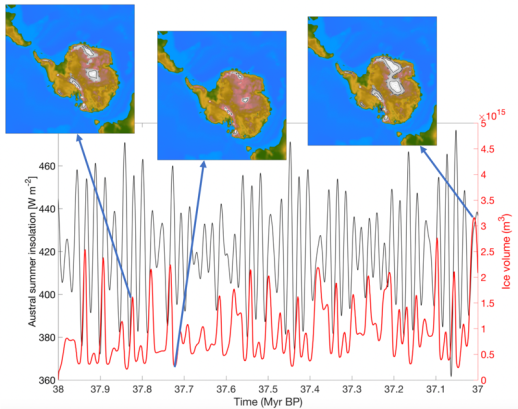MODELLING THE ANTARCTIC ICE SHEET DURING THE EOCENE-OLIGOCENE TRANSITION
The Antarctic ice sheet history dates back to the late Eocene-early Oligocene, a time when carbon dioxide concentrations were declining from values around 1000 ppm towards values below 600 ppm. The continental position of Antarctica was different than today and the Drake Passage and the Tasman Seaway started to open.
A large oxygen isotope excursion in deep-sea foraminifera, known as the Oi-1 event (33.9 Myr), is interpreted as a global cooling and major ice sheet formation event. At this time, it is thought that small ephemeral ice sheets grew into a continental scale ice sheet on the Antarctic continent. Oxygen isotope excursions during the late Eocene (38-33 Myr) and geomorphic evidence of glacial erosion suggest that there were ephemeral continental scale glaciations before the Oi-1 event.
This project aims to understand how sensitive the early Antarctic ice sheet was to changes in boundary condition using a novel coupling method with emulated climatologies over a multi-million year timescale (i.e. the Antarctic ice sheet model VUB-AISMPALEO coupled to the emulated climate from HadSM3).
